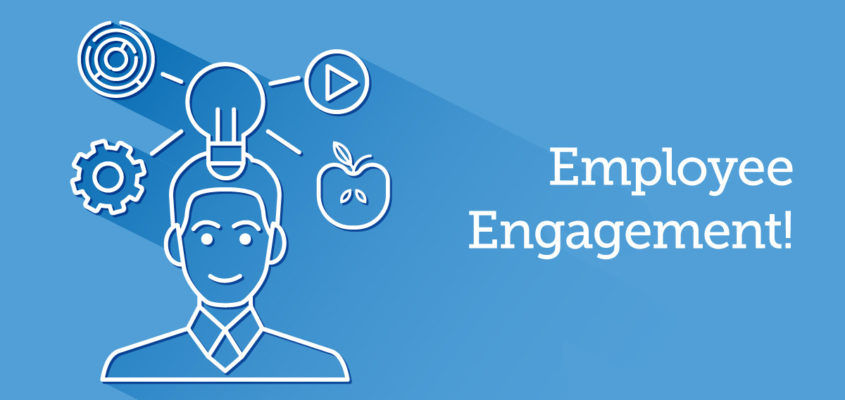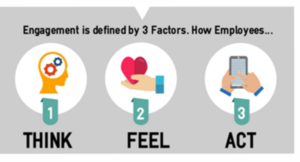
Why is employee engagement worth for your company?
Employee Engagement: The state at which there is correlative confidence between the employee and leadership. To do what’s accurate. However, whenever and with whomever.

“Motivating employees to work at their full potential is the main premise of successful management.”
— Eraldo Banovac
How do you make employees capable of going the extra mile and performing at the peak of their potential? Some say job satisfaction and happiness are pivotal elements of exceptional employee commitment. But it is not enough. The real key to outstanding commitment and performance is employee engagement.
What exactly is employee engagement?
- Employee engagement is forming an energetic and enthused workforce that puts its heart and soul into everything it does.
- It is a priority at every level of a business, and organizations with engaged employees outperform those with lower engagement levels.
Here are seven ways to generate engagement and get your employees charged up about going to work in the morning.
“Research indicates that workers have three prime needs: Interesting work, recognition for doing a good job, and being let in on things that are going on in the company.”— Zig Ziglar
Seven ways to develop employee engagement in your workplace
- Appreciate your employees
A business that misses appreciating its employees will surely suffer. By contrast, those that express appreciation often observe a spike in engaging employees. Recognition can come in various forms. Managers can send out personal emails to employees complimenting them on a job well done. Or the company can bestow its appreciation via social media posts or at companywide gatherings.
No matter how it gets done, recognition can boost the confidence of your employees and encourage them to take on more responsibility. Letting employees acknowledge that they are appreciated can positively impact on their commitment.
- Create a Collaborative Culture
Engagement falls flat when employees get entangled in a culture of poor communication, tight deadlines, and countless, unproductive meetings. Designing a collaborative culture that champions teamwork and breaks down silos will let employees be their real selves and help them feel secure about sharing both their successes and their failures. A collaborative culture can also help strengthen trust and good harmony among your employees. It enables employees to cross lines that demark bounds of expertise, getting them to engage more deeply in the overall success of the firm. By being open and available, you are fostering a positive work atmosphere that leads to a more thriving business.
- Recruit Team Players
Recruit people who like to work in teams. That’s the way of today’s business world. Reclusive corner-cube, subject matter experts who may the best be left alone are evident in today’s workplace. Work has become intensively collaborative. Teams accomplish all missions. Ownership and accountability often get distributed. If you want to develop a highly engaged workforce, you need to be remarkably selective in your hiring. Engagement begins right at the first job interview. Ensure your hiring process is engagement-centric by screening for candidates who can thrive in a team-oriented workspace.
- Level up Your Performance Reviews
Yearly performance reviews can provide employees with tons of comments and feedback but could come off as process-driven and routine. Consider executing a continuous, year-round feedback loop instead. It includes formal meetings or even informal engagements, often ad hoc, where employees and supervisors engage after finishing the work. This way, feedback is authentic, timely, and more unbiased. Managers can measure employee performance and address concerns early before they become a big problem. Employees have straight and immediate context for this feedback. You can further involve your workforce and raise achievement with 360-degree feedback and peer-to-peer reviews that let you promptly gather insights about each member of the team.
“There is little success where there is little laughter.”
— Andrew Carnegie
- Encourage the Free Flow of Ideas
The pleasure and pride we feel when our ideas are accepted and implemented are invaluable. When employees feel that you consider their opinions seriously, regardless of where they stand in the company hierarchy, they’ll volunteer more often, adding more exciting ideas and resolutions. Innovation happens best this way. The judgment-free brainstorming sessions spark creativity and allow your employees to come up with smart ideas. They pose questions, appreciate contributions, make suggestions, and don’t say anything demotivating, even if you don’t agree with an idea.
- Invest in Career Development
Work might change, but human nature doesn’t. Most of the people seek to enhance their strengths and reach their full potential. Your employees should recognise that you care about their growth and that new opportunities are waiting for them just around the corner. Prove this by investing in training them for their growth. Offer a rotational program where they get to encounter new and different areas of the business. Create career maps that encourage employees to explore their career advancement possibilities and envision areas of growth. For instance, if you hire an employee who speaks French, train that employee to help you launch your product internationally. You might just uncover an entirely new skill.
A business succeeds when employees are engaged and raring to go. The workplace you design can go beyond mere employee productivity and can drive deep engagement. Show your workforce that you care, and they will go the extra mile.

“Engaged employees are psychological “owners,” drive performance and innovation, and move the organisation forward.”— Gallup Report 2017
Reach us for your recruitment needs at Hand Phone: +91 7795547089 or Email us at team@bssrecruit.com.




